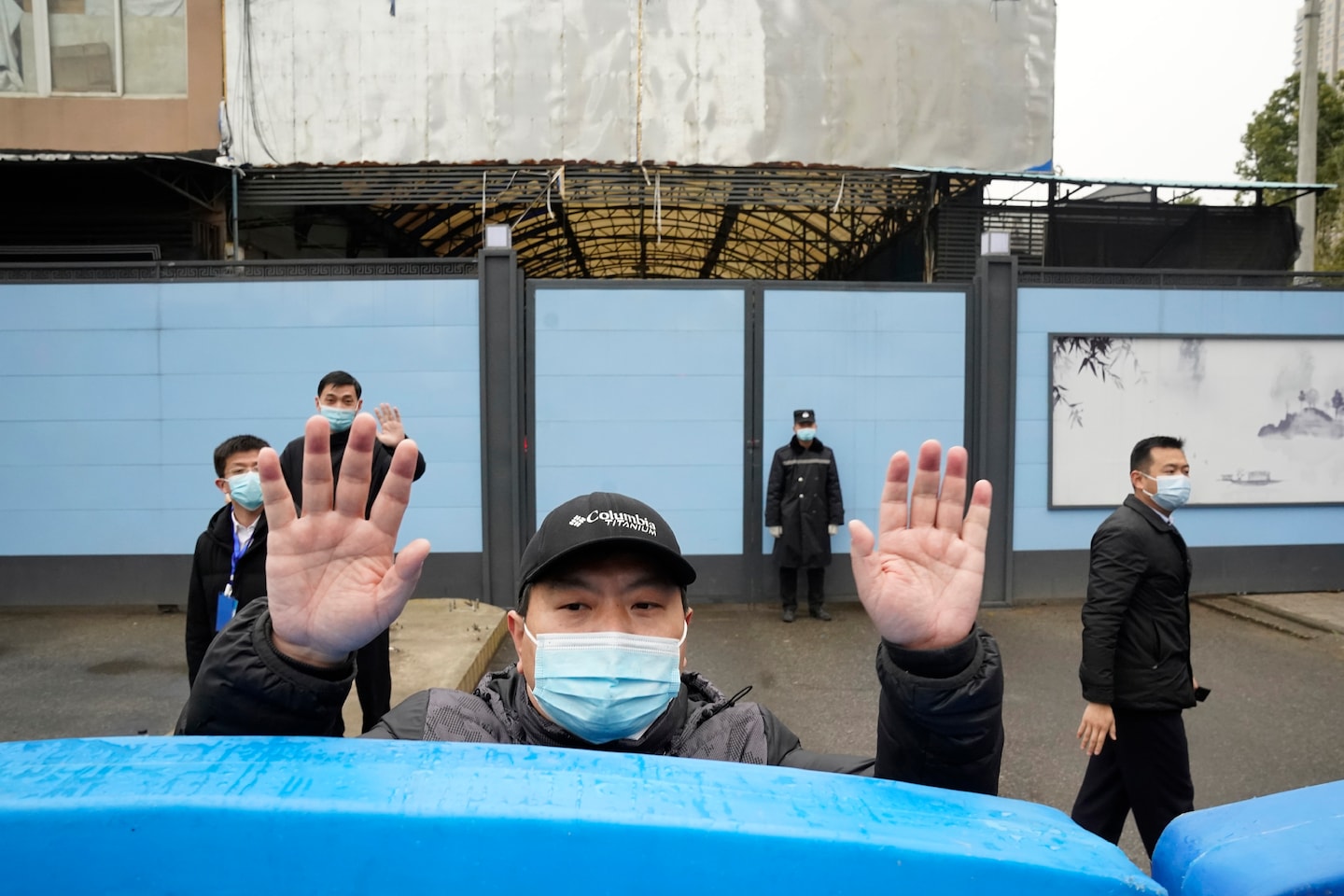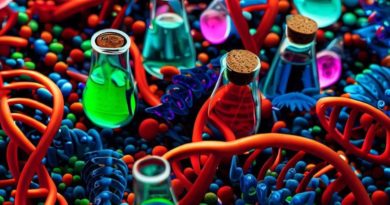Scientists hone argument that coronavirus came from Wuhan market

“Everything upstream of this — which animals, where did they come from, how it’s all connected — is completely unknown at this stage,” Kristian Andersen, an immunologist at Scripps Research, said in a media briefing Tuesday.
“Have we disproven the lab leak theory? No, we have not. Will we ever be able to? No. But there are ‘possible’ scenarios and there are ‘plausible’ scenarios. … ‘Possible’ does not mean equally likely,” Andersen said.
A natural origin of the pandemic — a “zoonosis” — has long been a favored theory among scientists for the simple reason that most pandemics, including the SARS coronavirus outbreak of 2002-2003, have started that way. Andersen and his colleagues believe multiple lines of evidence, including the clustering of early cases of covid-19 around the market, make a market origin not only a likely scenario but the only one that fits the data.
The “lab leak” conjecture was initially dismissed in most mainstream media as a conspiracy theory. There are numerous lab leak scenarios, and many have focused on the Wuhan Institute of Virology, a major research center that studies coronaviruses.
Scientists there say they never had the virus in their laboratory. But outside experts questioned whether the laboratory adhered sufficiently to safety measures when researching viruses. Chinese authorities limited access to the laboratories by outside investigators. Amateur sleuths created online communities that steadily raised suspicions about a possible lab leak. Pressure to investigate the hypothesis came amid the struggles of the scientific community to nail down how the virus entered the human population.
In May 2021, the journal Science published a letter from 18 scientists calling for an investigation into the virus’s origin that would include exploration of the lab leak theory. Soon after that, President Biden asked his intelligence agencies to investigate all possible origins of the pandemic. The review concluded that the virus was not an engineered bioweapon, but otherwise failed to reach a conclusion about where it came from.
Among the scientists who signed the letter to Science was Michael Worobey, an evolutionary virologist at the University of Arizona who felt the lab leak thesis deserved attention even if it wasn’t the most likely origin. But Worobey soon became convinced that the virus came out of the market. Worobey is the lead author of the new paper that contends the market was the pandemic’s epicenter.
The researchers scoured data about the earliest patients, many of whom had direct links to the market or lived nearby. The geography of early community spread showed infections radiating outward from the vicinity of the market, Worobey said: “It’s an insane bull’s eye.”
Moreover, when the market was first identified as the site of a cluster of cases, Chinese investigators took environmental samples searching for traces of the virus. A disproportionate number of positive virus traces came from the section of the market where live animals had been sold, the new study reports.
“The virus started spreading in people who worked at the market, but then started spreading in the surrounding local community as vendors went to local shops, and infected people who worked in those shops,” Worobey suggested.
Worobey is not new to this issue. Last year, he wrote a “Perspective” article in Science that said the geographical clustering of cases in and around the market could not be explained away as “ascertainment bias,” meaning the clustering was not simply the result of investigators knocking on doors in that area after the market outbreak was detected.
He believes any alternative scenario — such as a lab leak — is implausible.
“It now puts us at a point where we know that the Huanan market was the epicenter of this pandemic. That much is now established. If others want to argue with that, they’re now essentially taking a pseudoscientific approach,” Worobey said in an interview Tuesday. “Even though you don’t have the smoking gun of, ‘Yes we’ve sampled the raccoon dog with the virus in December,’ when you put it all together, it’s the only theory that actually explains all the data.”
Angela Rasmussen, a virologist at the University of Saskatchewan and co-author of one of the new papers, said in an email that she agreed with Worobey: “There is no alternative explanation that fits the facts, so anyone trying to come up with one will have to become adept at willful ignorance, a logical contortionist, or simply a fabulist.”
The contention by the authors of a natural origin of the pandemic is not new: The same two papers in an earlier form were posted online in February on a “preprint” site. But at that point, they existed in peer-review limbo — something that could be reported in a news story but lacking the stature of studies that have survived scrutiny by knowledgeable outsiders and journal editors.
The second paper published Tuesday in Science reports that genetic evidence and computer modeling suggest the virus spilled into the human population not just once, but on multiple occasions in late 2019. Genomic analysis of early cases shows two distinct lineages, called A and B, that had to have come from separate spillovers. Both lineages were found in environmental samples taken in the market, according to a preprint paper from Chinese researchers in February.
Promoters of the lab leak theory counter that the market was more likely a superspreader site. The virus could have been brought there by someone infected at a laboratory, or someone exposed to an infected lab worker, for example.
The argument for a market origin also relies on Chinese data that may be unreliable, Jesse Bloom, a virologist at the Fred Hutchinson Cancer Research Institute, said in an interview earlier this year. He said he feels the data are “inconclusive.”
“I feel the data released by the Chinese government should be treated with a healthy grain of salt,” Bloom said.
There is no proof that the virus or its immediate ancestor was in any laboratory before the outbreak in Wuhan. But the ongoing mystery of the pandemic’s origin has called attention to the kind of research on viruses — including “gain of function” experiments — that some critics say is too risky. The U.S. National Institutes of Health, immersed in the controversy because it helped fund some research at the Wuhan Institute of Virology, this year said it was reviewing its policies for ensuring laboratory safety and security.
Sen. Rand Paul (R-Ky.), who favors a laboratory origin explanation, said at an April 30 rally in Kentucky that if Republicans take power in the Senate after the midterm elections, he will use subpoena power to “get to the bottom of where this virus came from.”
Chinese scientists have denied that the virus was present in their lab. The virus, according to Andersen and other virologists who have studied it, does not appear to be manipulated or engineered, and its genetic features could have been produced through evolution.
Still, the controversy about coronavirus research is not likely to fade.
Jeffrey Sachs, a Columbia University economist, heads a commission sponsored by the Lancet journal expected to produce a report this fall on the pandemic, including the origin of the virus. He recently co-authored an article in the Proceedings of the National Academy of Sciences calling for a probe of the pandemic origin through a “bipartisan congressional inquiry with full investigative powers.”
On Tuesday, after Science published the two papers, Sachs said in an email that he still favors the lab leak theory: “The two competing hypotheses, natural spillover and laboratory creation, are both viable. They should be compared directly against each other. In my view, the laboratory creation hypothesis is the more straightforward and more credible.”
The new papers do not declare “case closed” but are useful, noted David Relman, a professor of medicine and microbiology at Stanford University who was among the signers of the 2021 letter to Science calling for a probe of all possible pandemic origins. He said he would like to see a similarly thorough forensic study of the lab leak hypothesis.
“I don’t think we can say that we now know that it started here. I think we can say that something interesting happened in this part of the city,” Relman said. “We don’t have any [coronavirus] positive animals at the market.”
Andersen, the Scripps Research scientist, has been entangled in the virus origin controversy for more than two years. He was lead author of an early paper, published in Nature Medicine, saying the virus was clearly not engineered. But his first impression of the virus had been that it looked unnatural, and only after doing more research did he conclude that its features could have been produced through evolution.
On Tuesday, Andersen reiterated that he initially thought the novel coronavirus probably came from a laboratory. But all signs now point to the market, he said.
“It’s not a formal proof, again, but it is so strong in my opinion that any other version, a lab leak for example, would have to be able to explain all this evidence,” he said. “It’s just not plausible.”
correction
A previous version of this article incorrectly quoted scientist Kristian Andersen, who said “plausible,” not “possible,” when discussing alternative theories for how the pandemic began. This version has been corrected.
This article has been archived for your research. The original version from The Washington Post can be found here.


